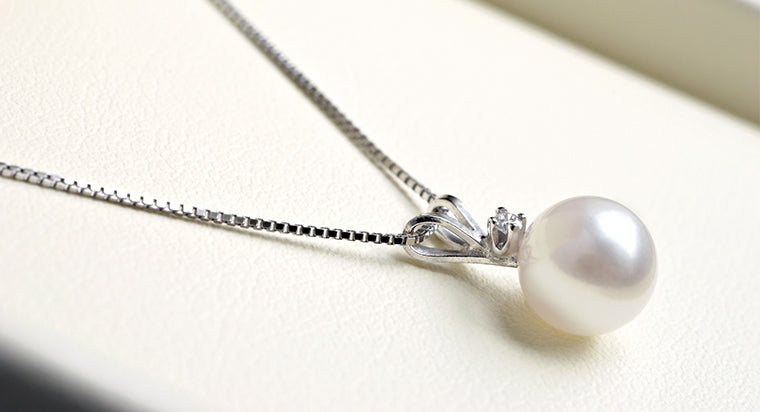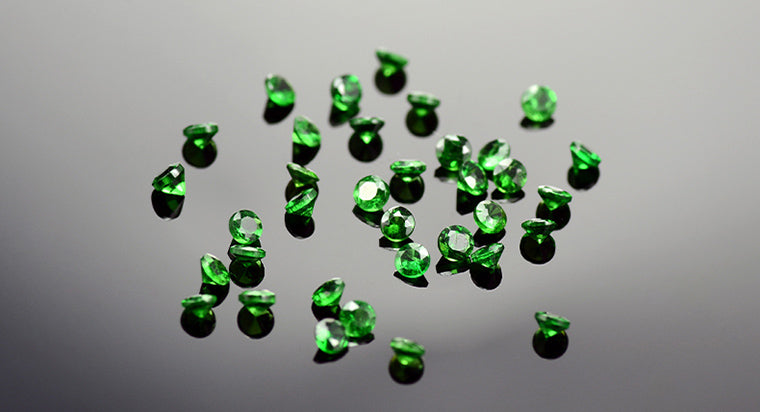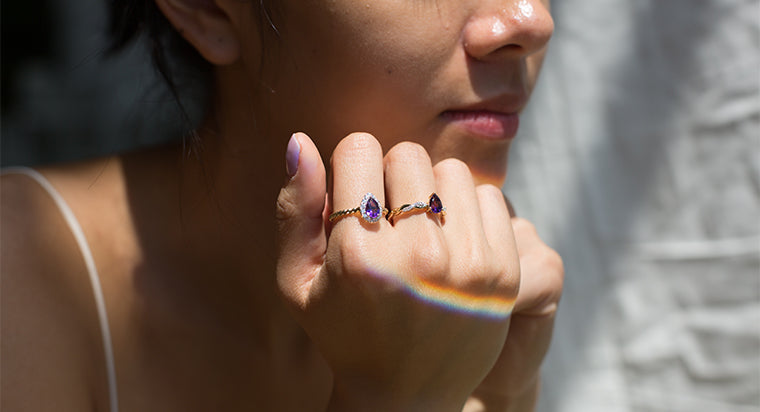Amethyst Origin & Formation
TABLE OF CONTENTS
What is Amethyst?
Amethyst is a member of the quartz mineral family that is distinguished by its gorgeous purple hue. It is also referred to as purple quartz. The color of amethyst can range in color from light lilac to a deep, rich purple. This gemstone was historically reserved for royalty, but today it is used in a variety of beautiful jewelry.
Amethyst can be naturally mined as well as lab created, both of which make great additions to rings, necklaces, bracelets, and more. Amethyst is the birthstone for the month of February, as well as the traditional gift for six-year anniversaries.
History and Origins
The word amethyst comes from the Greek word amethystos, which literally means 'a remedy against drunkenness'. This word origin is thought to be a result of the gem's purple color, which resembles the look of red wine.
Until the 19th century, amethyst was primarily mined in Russia. However supply dramatically increased when natural sources of its crystals were discovered in Brazil. Today, amethyst can be found all over the world, from Africa to Asia, to South America. Brazil remains a major supplier, with a large portion of the stones coming from the southern state of Rio Grande du Sol.
Crystal Formation
Amethyst is a variety of quartz and its chemical makeup is composed of silicon dioxide. Quartz is formed in lava, specifically when gas bubbles become trapped, allowing crystals to form inside the cavities created by the bubbles. When the cavities are filled with a silica-rich liquid, crystals begin to form within volcanic rocks.
Moreover, these purple stones are unique in that they often grow in huge geodes, which are rocks that appear plain on the outside, but actually are filled with crystal gemstones. Amethyst geode formation is a trait that differentiates the stone from other gems such as white diamonds, which do not form geodes. The gems inside these geodes follow a six-sided pyramidal crystal structure.

Some amethyst geodes, especially those mined in Brazil, are large enough for a person to stand inside of them! Naturally formed geodes take millions of years to form, and most geodes have been forming since prehistoric times.
Purchasing Amethyst
Amethysts are valued using much of the same criteria as other gems. When purchasing these beautiful gems, it's important to keep in mind the four Cs: color, clarity, cut, and carat. All of these factors impact both price and quality.
Color:
The most important factor in determining the value of amethyst is its color. The gem should be a reddish to deep purple color and should not contain any color zoning. Color zoning is when there are bronze colored tints within the stone, the presence of which significantly reduces the value of the gem. Stones should not be too dark since it can make them appear dull and dark under certain light.
Clarity:
High-quality versions of this stone are “eye-clean” meaning it is free of any visible inclusions. Moreover, the gems that contain inclusions are of lesser quality and are often made into beads or cabochons (as seen below). The amount of inclusions a stone contains can sometimes be a product of its origin, with Brazilian amethysts typically having fewer inclusions.

Cut:
Amethysts can be cut in many different ways. Cuts can include oval , triangle, cushion, emerald cuts, as well as other unique freeform shapes.
Carat:
When purchasing amethyst it is important to note that the price does not increase significantly with larger carat sizes. This makes amethysts a great option for larger jewelry designs.
FAQs
What does amethyst do?
What is amethyst good for?
How to tell is amethyst is real?
What is the color of amethyst?
Is amethyst hard?









